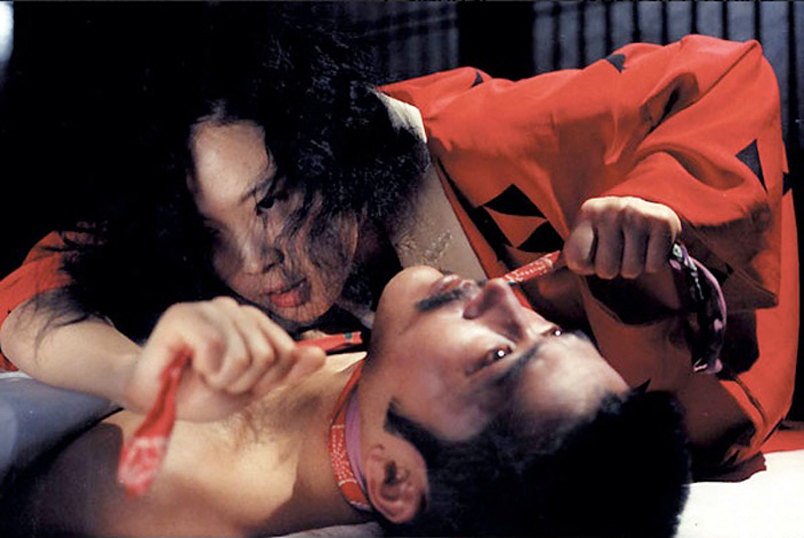Reprint from Breath Control, Risk and Safety
Some writers have argued that it’s impossible to do any sort of BC safely. ay Wiseman, author of the SM101 reference book, has stoked controversy with his claims that all forms of BC put the bottom ‘at imminent, unpredictable risk of dying’. And when Checkmate published a piece on the subject by an enthusiast (Williamson 1994), they felt obliged to include an accompanying piece from their medical consultant warning not to do it (Tattoodoc 1994).
So what is the truth? Physiologically speaking, the body needs oxygen for the chemical reactions that power our cells, and it also needs a way of getting rid of carbon dioxide, a product of those reactions. Normally both needs are satisfied by breathing: oxygen from the air is drawn into the lungs where it dissolves into the blood, while carbon dioxide is released to be exhaled. Obstructing either of these processes results in the rapid build-up of acid in the blood, with damaging consequences. It will also trigger a number of the body’s ’emergency procedures’, and these can cause problems of their own.
When the heart gets short on oxygen, it starts to fire off cells that cause extra contractions. According to Wiseman, as long as the oxygen is restricted there is a chance that one of these will occur at the wrong phase of the cycle, potentially causing a heart attack. The lower the oxygen gets, the greater the risk. Unfortunately there is no reliable way of telling when the extra contractions start even with a cardiac monitor.
Wiseman’s critics claim his argument is based on untested hypotheses, though anyone with an elementery knowledge of physiology would have to admit that depriving the heart of oxygen, or hypoxia, places this vital organ under unusual stress. However it seems reasonable to assume that the heart can cope with at least some hypoxia without taking panic measures. Exercise puts pressure on the oxygen supply, and undersea swimmers can develop the ability to hold their breath for minutes with no apparent ill effects. Like everything else, general health will have an impact too. Those with heart and respiratory conditions are almost certainly best advised to avoid breath play.
Another result of hypoxia is fainting, which rapidly follows from a drop in oxygen to the brain. Such a drop can happen naturally when inactive for a long time so that blood pools in the lower body: by shutting down consciousness, the body is likely to fall into a horizontal position, making it easier to pump blood to the brain. Most people into BC probably don’t go as far as loss of consciousness, but for some it’s the ultimate thrill.
The risk of unconsciousness in all BC play is the main reason for the best known safety rule: if you do play, don’t play alone. The vast majority of BC-related deaths — estimated at least 1 per year per million of population or 250 in the US, 60 in the UK — are due to solo play. The warnings that a faint is about to occur, such as ringing in the ears and tunnel vision, come only seconds beforehand, which may not be enough time to escape. If you must play alone, do it with blocking an air source with your hand in such a way that if you faint the hand will fall away and leave the airway unrestricted. Bondage and BC in a solo scene are a lethal combination.
You can cause a faint without restricting the airway at all, by placing pressure on the carotid artery. Some BC fans claim carotid pressure is the safest way to produce unconsciousness since it avoids any pressure on the vulnerable throat and windpipe.
Details of how to deal with a faint can be found under First Aid.
Though victims of a faint are confused and distressed when they first come round (a fact those planning such a scene should bear in mind), recovery is usually rapid and complete, and an occasional faint in everyday life is regarded as medically insignificant. The biggest danger is striking the head while falling, easily avoided in a planned scene. Provided a normal air supply is immediately restored (which of course it should be), the loss of consciousness is temporary. According to medical sources, the brain can withstand three minutes of oxygen deprivation before serious damage occurs, but opponents of BC argue that cumulative brain damage can result from repeated forced unconsciousness.
It’s well known that low level or repeated oxygen deprivation (from, say, high altitudes or in certain medical syndromes where patients’ breathing ceases intermittently during sleep) can cause brain damage. Hypoxia destroys neurones (brain cells), which in adults are the only cells in the body that can’t be replaced. Wiseman has cited the case of a judo instructor who may have been brain-damaged by frequent sessions as a demonstration model for the carotid strangulation techniques traditional in his sport. Checkmate’s consultant Tattoodoc points out that the cerebral cortex is the most demanding of oxygen, so hypoxia ‘affects the highest centres of the brain first’.
To get this in perspective, we have many billions of neurones and the brain can work with much fewer than its natural endowment. They are destroyed all the time by ageing, alcohol and other drugs, blows to the head and so on. It might be rational to decide to ‘spend’ some of our generous but finite supply on activities we enjoy, but spend carefully.
Like anything else in SM, sensible play requires a calculation of risks against pleasures, and the minimising of whatever risks you can. For example, some BC enthusiasts report that a second attempt at causing unconsciousness during a session requires a much longer period of oxygen deprivation, which increases the danger time for neurones, and is also not so satisfying. Rationing the amount of this sort of play to special occasions with substantial gaps in between might be advisable both in terms of brain conservation and pleasure!
And given the dangers, it’s worth asking yourself how far you actually need to go, and if you would be satisfied with Tanith Tyrr’s advice (1996) to ‘play it out as a fantasy or fetish, talk up the verbal aspects a lot, and go light on the actual doing of the deed.’ The idea of breath control is scary enough and a little may go a long way in the context of a well-played mindgame. If you play heavier, treat the practical safety aspects with extra-deadly seriousness, and seriously consider a course in first aid and CPR, which if anything does go wrong may increase your chances at least slightly.
Even Wiseman doesn’t demand people stop playing with BC, just that they be aware of what he sees as the neglected dangers. The fact remains that for some people asphyxiation is a compelling fascination and they are going to experiment anyway. Squicked hysteria and blanket bans stifle the discussion, and increase the chances of some poor lonely pervert enjoying a rather-too-ultimate orgasm.
Links and References
Usenet posts by Tanith Tyrr and Jay Wiseman cited above, along with an excellent post by an experienced practitioner, Ol’ Sarge, are archived at Magenta. Wiseman’s post has been reworked into an appendix for the new edition of his SM 101: A Realistic Introduction.
For further reading see the two Checkmate articles by Williamson and Tattoodoc (1994), and Money et al 1991.
Sections of this briefing first appeared as ‘Suffocated by Love: The Breath Control Controversy’ in Leather Online 2, March 1997.



